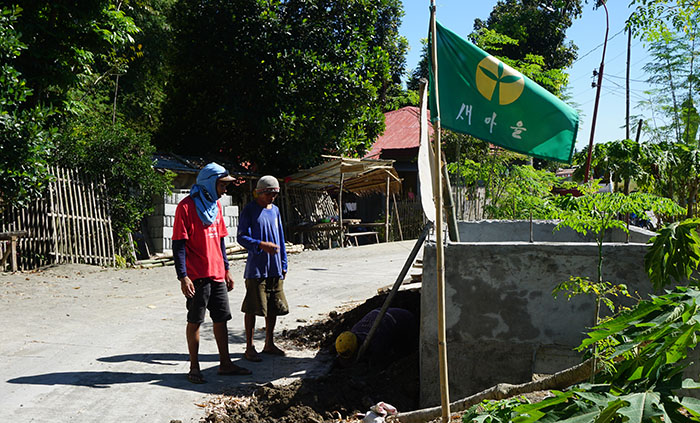
The green and yellow flag representing Korea's New Community Movement, or Saemaul Undong, flaps in the breeze above a construction site for a new irrigation system in Sinibaan, Iloilo Province, the Philippines.
In the town of Sinibaan, in the Philippines' Iloilo Province, there used to be no reservoirs or irrigation systems and local farmers were unable to farm during any drought. Now, however, those farmers no longer need to fear droughts. They now have water pumps and irrigation systems that have been built by the local community, driven by the spirit of Korea's New Community Movement: diligence, self-help and cooperation.
Construction of the new irrigation system is part of Korea's Rural Development Administration's (RDA) new community development projects. Since 2015, the agricultural organization has been working on developing a new community across Iloilo Province that will produce and distribute a range of high-quality rice varieties.
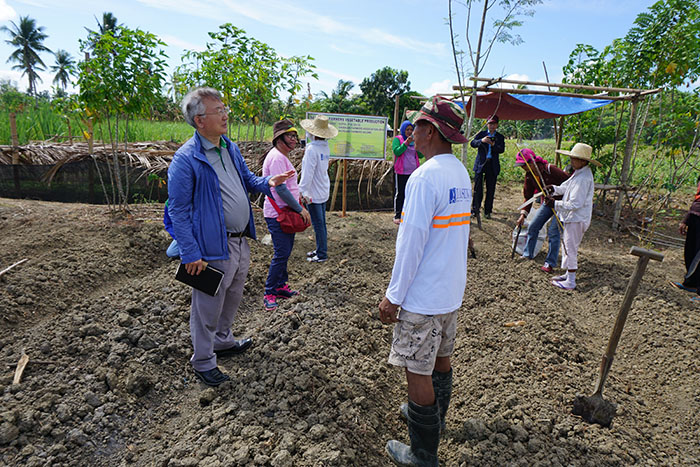
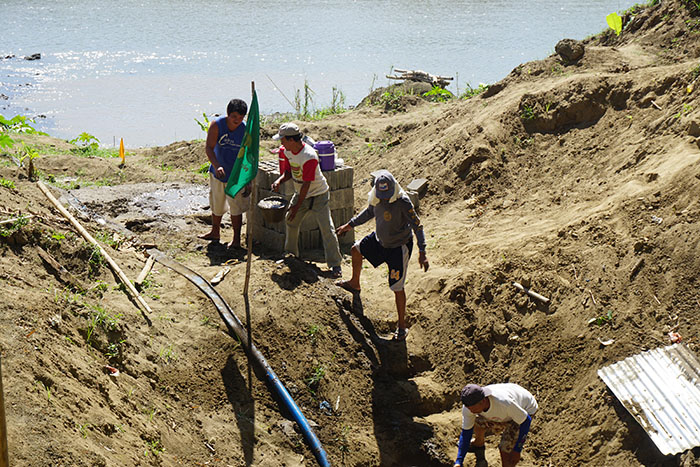
Community members work together to connect irrigation pipes in Sinibaan, in Iloilo Province in the central Philippines.
The RDA's new community development project was inspired by Korea's own New Community Movement, or Saemaul Undong, a range of rural and agricultural development policies from the 1970s and 1980s, and is part of the RDA's Korea Program on International Agriculture (KOPIA). Through this program, the RDA shares its agricultural skills and experience, and the "three spirits" of the New Community Movement: diligence, self-help and cooperation. Through these policies, it seeks to increase rural communities' income and to secure financial independence of farming families all around the world.
As of May 2016, the RDA runs KOPIA centers in 19 countries around the world, including in nine Asian countries, including Vietnam and Myanmar, and ten African & Latin American countries, including Kenya, Algeria and Paraguay. Among these, new community development projects are run at five KOPIA centers: in the Philippines, Cambodia, Sri Lanka, Paraguay and Kenya.
The projects have already shown significant achievements in terms of crop productivity. In the Philippines, where the project began in 2015 in three rural communities, it aimed at producing and distributing high-quality varieties of rice. After only one year, it has seen rice productivity rise to 4.5 tons per hectare, from 3.8 tons per hectare.
During the same period, Sri Lanka's rural communities that worked through KOPIA centers on the production and distribution of onions, saw onion productivity also increase to 25 tons per hectare, from the earlier figure of 14 tons per hectare.
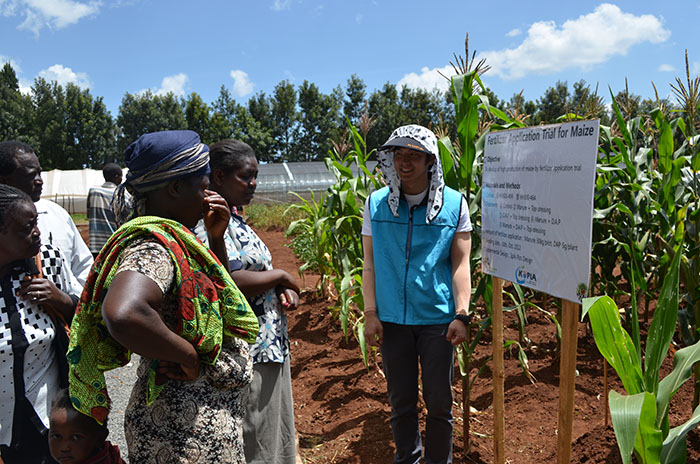
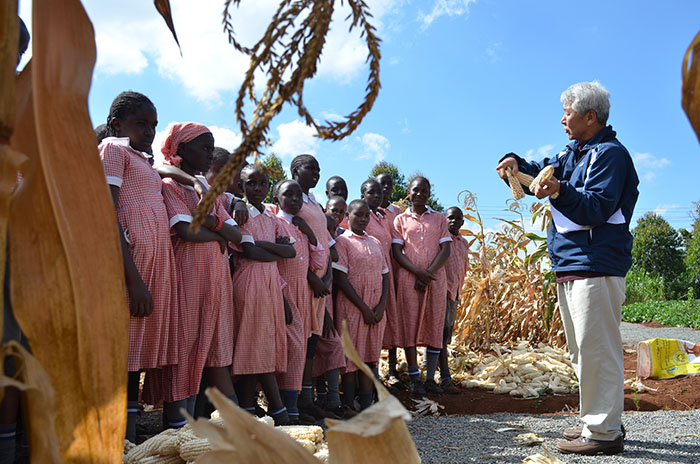
Farmers and students in Kenya participate in one of KOPIA's agricultural educational programs. Earlier this year, the RDA began community development projects in three communities in Kiambu County, Kenya.
Finally, in Kenya, three communities in Kiambu County have begun to work with the RDA as "new communities." The RDA will focus on distributing high-quality chicken and potato breeds that will help farmers gain and retain more profit. Two to three cultivation complexes for poultry and potatoes will be set up in each community, and their own production and distribution system will be developed in partnership with Kenya's Ministry of Agriculture Livestock & Fisheries and the Kenya Agricultural and Livestock Research Organization.
By Chang Iou-chung
Korea.net Staff Writer
Photos: Rural Development Administration
icchang@korea.kr